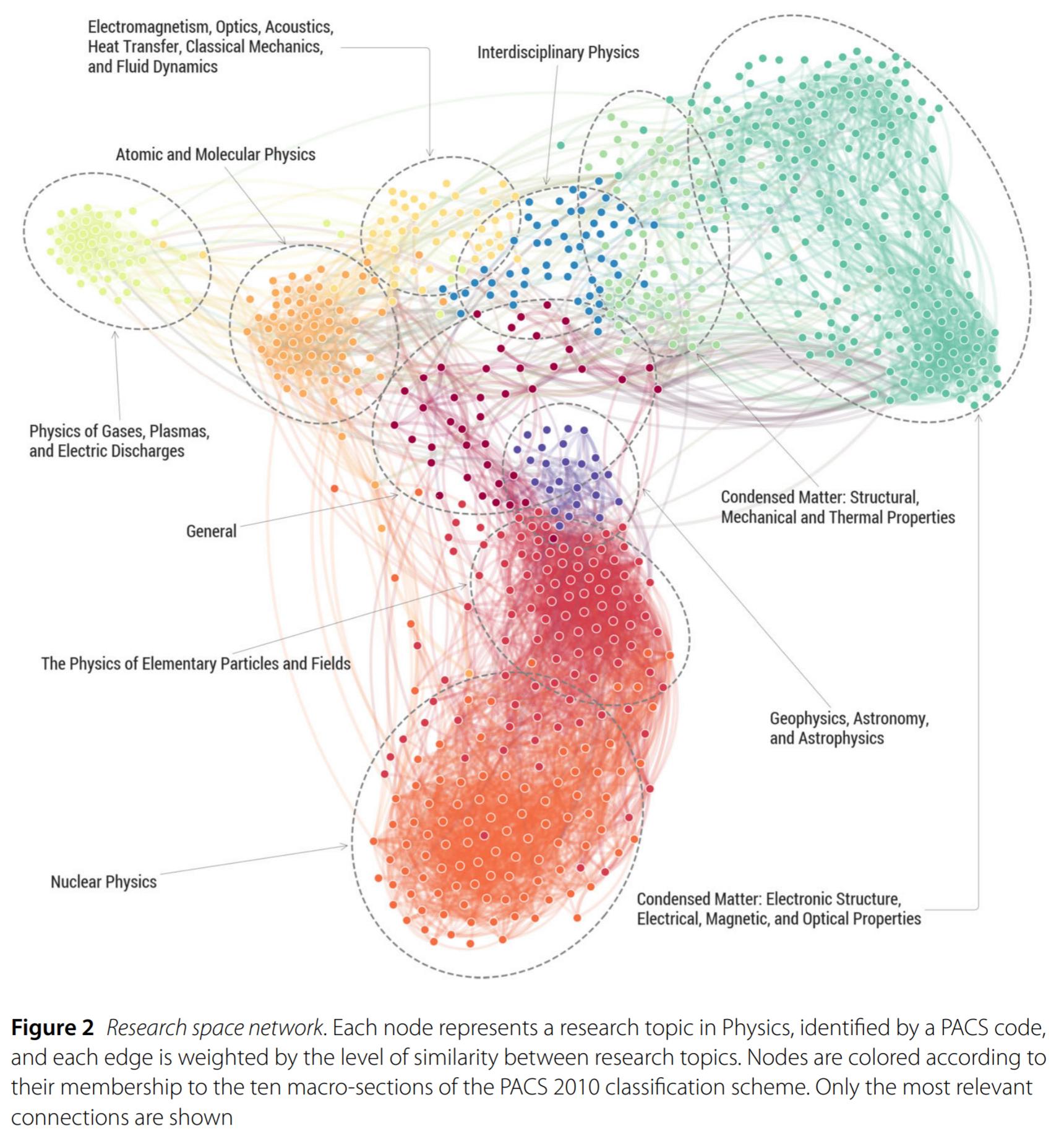Mapping the physics research space

Scientific discoveries do not occur in vacuum but rather by connecting existing pieces of knowledge in new and creative ways. Mapping the relation and structure of scientific knowledge is therefore central to our understanding of the dynamics of scientific production. In this project we introduce a new approach to generate scientific knowledge maps based on a machine learning approach that, starting from the observed publication patterns of authors, generates an N-dimensional space where it is possible to measure the similarity or distance between different research topics and knowledge domains. We provide an implementation of the proposed approach that considers the American Physical Society publications database and generates a map of the research space in Physics that characterizes the relation among research topics over time. We use this map to measure two indicators, the research capacity fingerprint and the knowledge density, to profile the research activity in physical sciences of more than 400 urban areas across the world. We show that these indicators can be used to analyze and predict the evolution over time of the research capacity and specialization of specific geographical areas. Furthermore we provide an extensive analysis of the relation between socio-economic development indicators and the ability to produce new knowledge for 67 countries, as measured by our approach, highlighting some key correlates of scientific production capacity.
Paper:
- Chinazzi, M., Gonçalves, B., Zhang, Q., & Vespignani, A. (2019). "Mapping the physics research space: a machine learning approach". EPJ Data Science, 8(1), 33.
Read paper here
